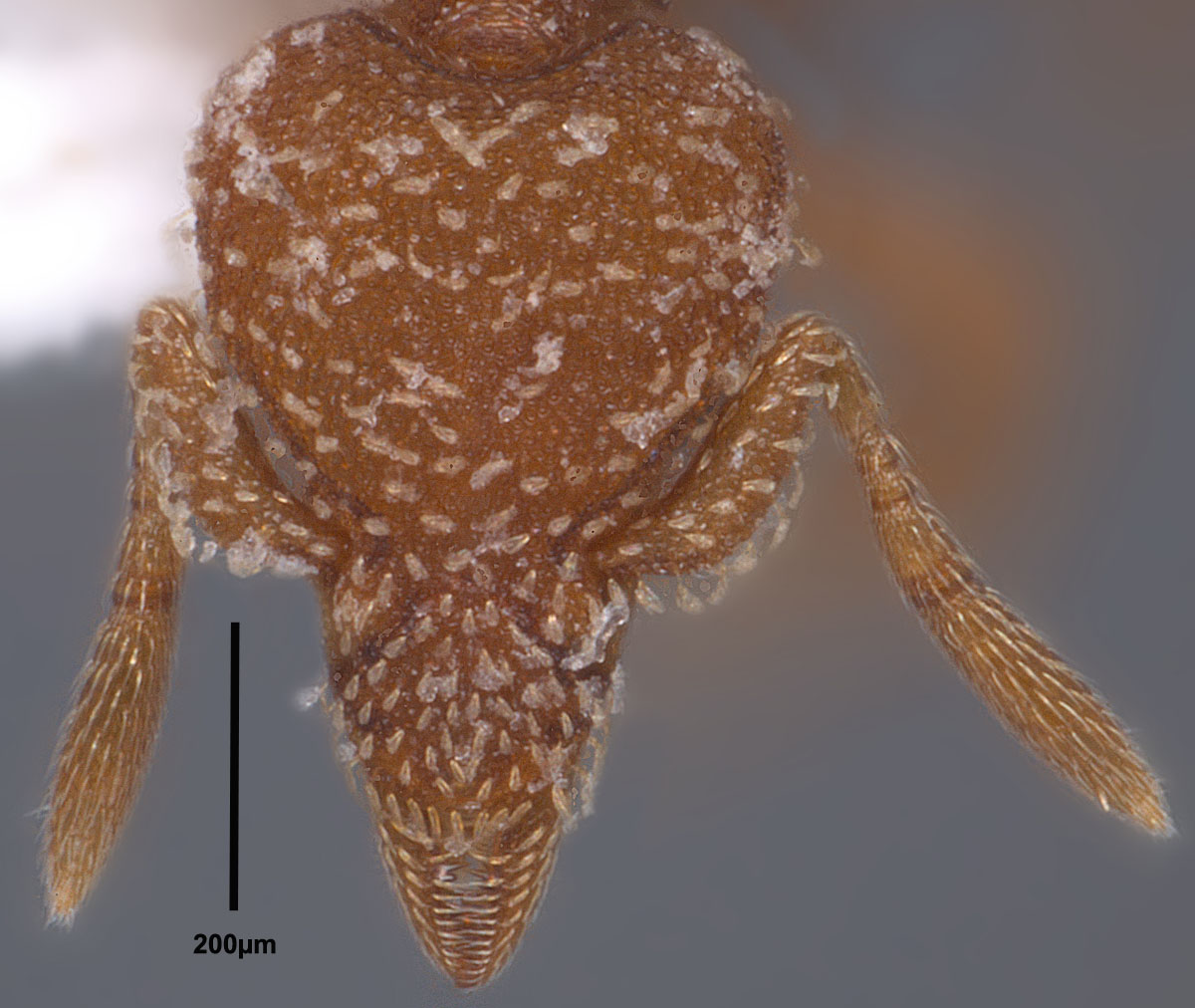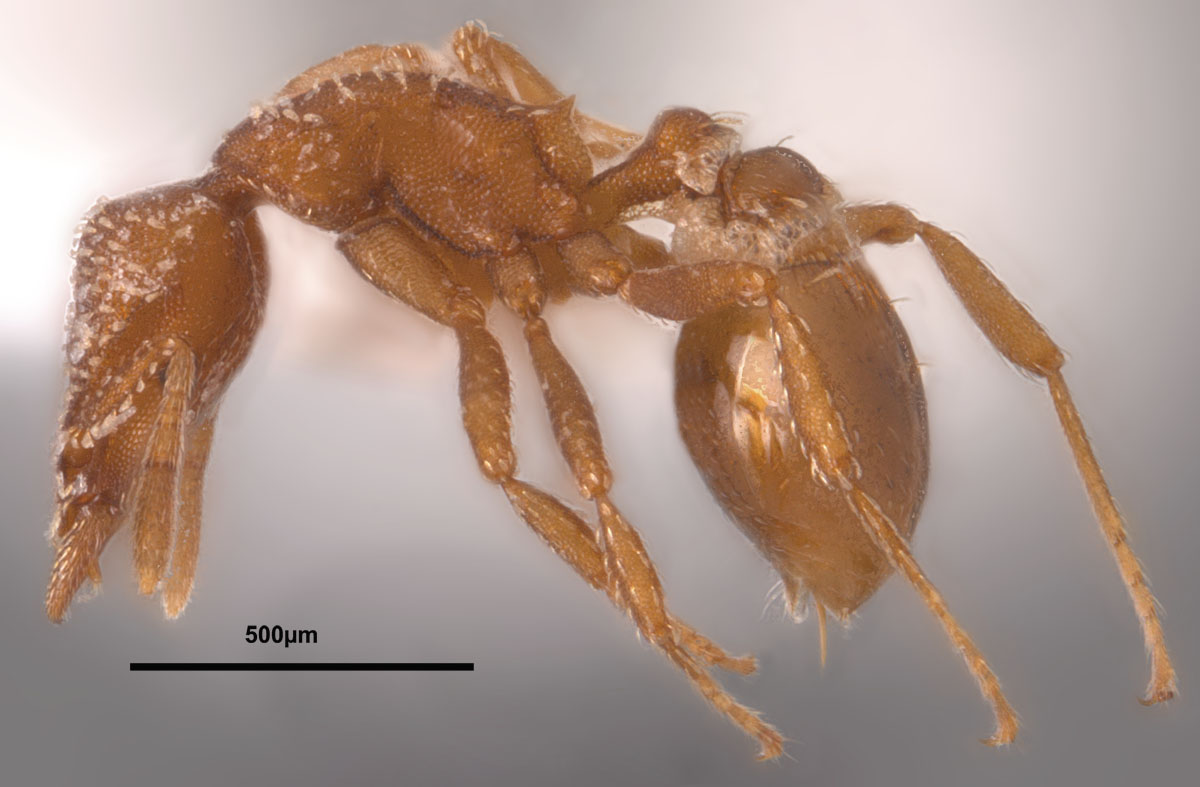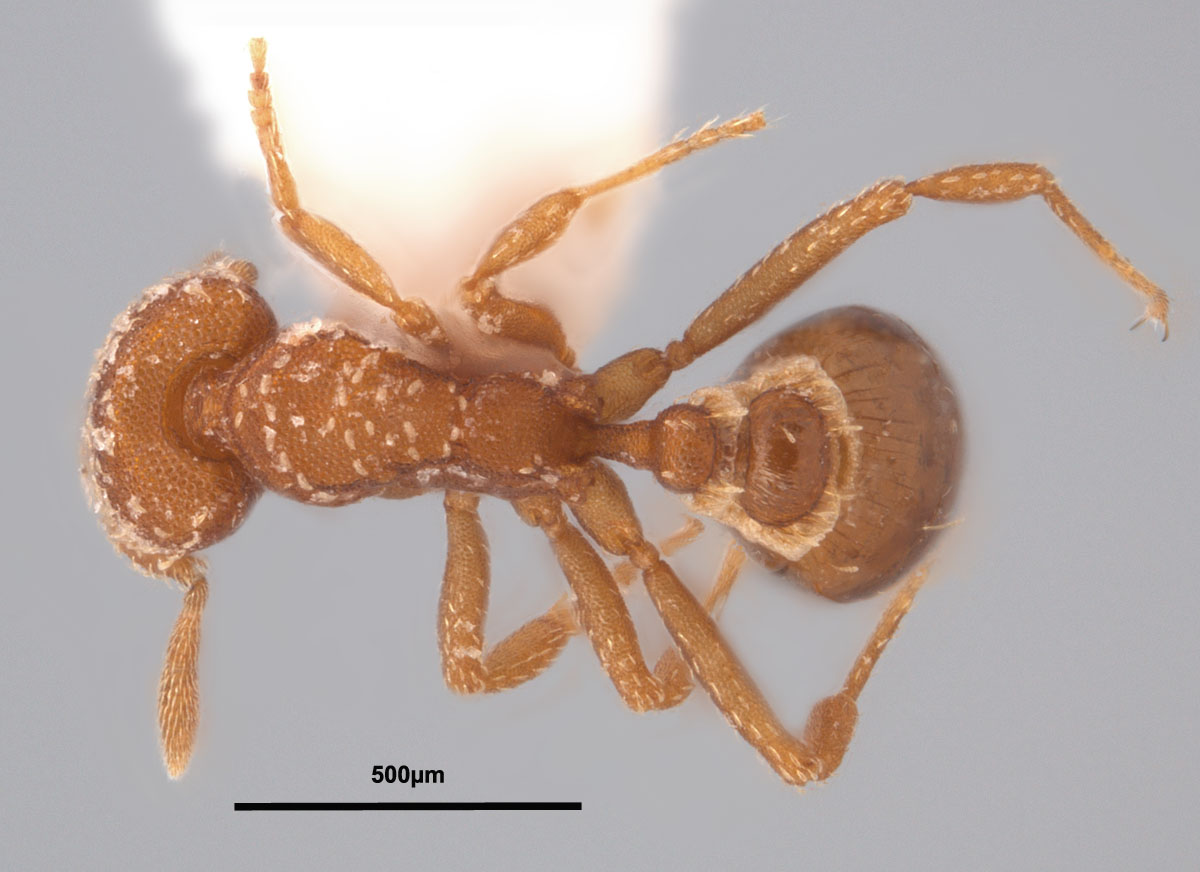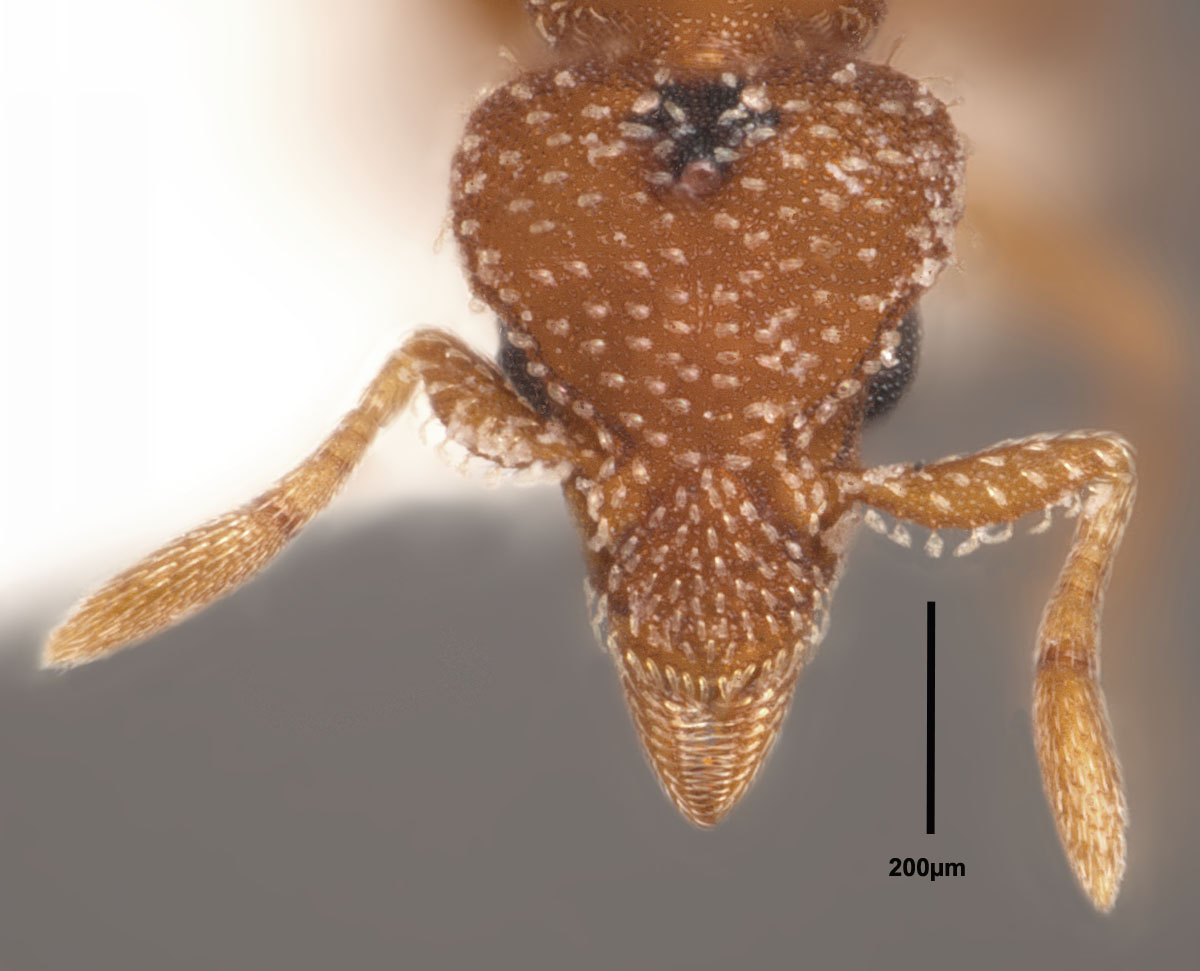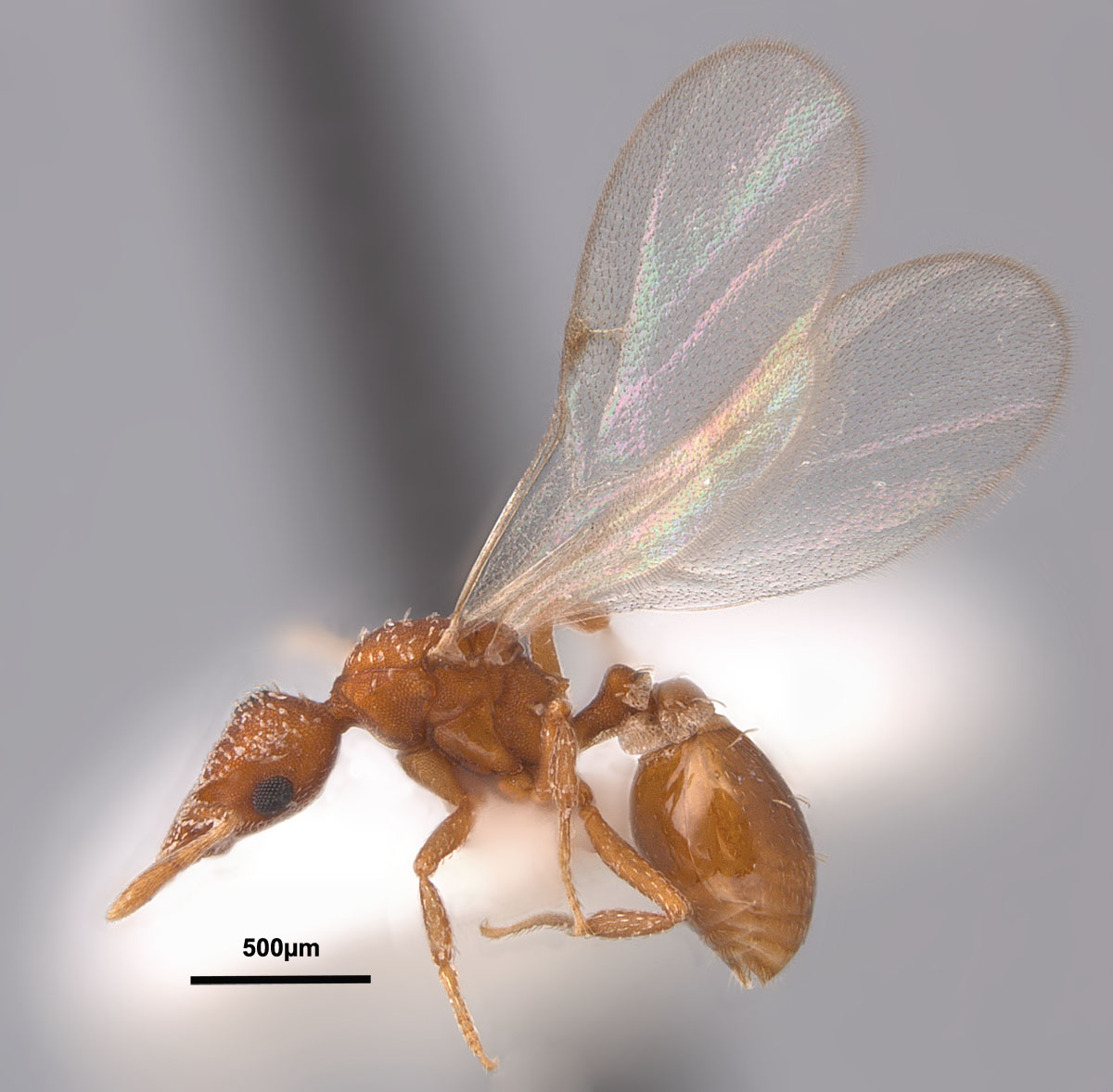Subfamily MYRMICINAE Author: Joe A. MacGown |
||
| td> | ||
Strumigenys epinotalis , full face view of worker (click photo to enlarge). |
Strumigenys epinotalis , profile view of worker (click photo to enlarge). |
Strumigenys epinotalis , dorsal view of worker (click photo to enlarge). |
Strumigenys epinotalis , full face view of queen (click photo to enlarge). |
Strumigenys epinotalis , profile view of queen (click photo to enlarge). |
|
Introduction Strumigenys epinotalis is a minute (TL 1.9–1.95 mm) arboreal attine ant previously known only from Brazil, Costa Rica, Ecuador, and southern Mexico, but recently discovered to occur in southern Alabama, Florida and southern Louisiana (Chen et al. 2012, MEM records). Here we report the first occurrence of S. epinotalis from Mississippi. Diagnosis Identification Alate Female: Minute, slightly larger than worker (HL 0.59 mm, HW 0.45 mm, EL 0.14 mm, ML 0.11 mm, SL 0.31 mm, MeSL 0.68 mm, FWL 1.80 mm) (n=1) (MEM). Overall reddish brown in color. Head pyriform, widest posteriorly; entire head including clypeus with fine microreticulation; dorsum of clypeus with numerous clavate setae directed anteriorly or away from midline of clypeus; clypeal margin with a fringe of clavate setae all curving anteriorly toward midline of clypeus; remainder of head with slightly larger clavate to spoon-shaped setae that curve toward midline of head; elongate flagelliform cephalic setae absent; leading edge of scape with a row of elongate, curved setae, all directed toward the base of the scape or downward; eye large with numerous ommatidia; three ocelli present; antenna 6-segmented, scape short, apical flagellomere greatly enlarged forming a 2-segmented club with preapical flagellomere; clypeus somewhat pentagonal shaped, narrowing anteriorly, and with anterior margin slightly convex; mandibles subtriangular, lacking diastema; nine acute teeth present following basal lamella; third tooth from basal lamella spiniform, elongate and distinctly longer than other teeth, with subsequent teeth alternating in length with the fifth being longer than the fourth and the seventh being longer than the sixth, and the remaining two teeth smaller and blunter. Mesosoma squarish in profile, with fine reticulation except katepisternum, which is mostly shiny; mesosomal dorsum with large, scattered semi erect clavate setae; elongate, flagellate setae lacking; mesoscutum and mesocutellum smoothly arched in profile view; mesoscutum not completely overhanging pronotum in dorsal view; mesoscutellum raised above propodeum; propodeum with a pair of small spines directed upward; propodeal declivity with a spongiform lamella. Wings, if present, lacking pigmented veins, short brown pterostigma present, with fringe of setae along wing edges apically and on ventral sides of wings to about midway toward base. Waist 2-segmented, with dense microreticulation; petiole pedunculate, node rounded rectangular in dorsal view, several elongate clavate setae present posterodorsally, a narrow curtain of spongiform tissue present ventrally, and spongiform tissue present posteriorly; postpetiole rounded rectangular, about twice as wide as petiole (in dorsal view), with a few scattered erect, clavate setae present dorsally, and with thick spongiform tissue present posteriorly and ventrally. Gaster shiny, with a few scattered appressed pubescent setae; scattered erect, clavate setae present dorsally; sting present. Biology and Economic Importance This species is unlikely to pose any economic problems. For more info about this species, see Chen et al. 2012. Pest Status Distribution Literature Cited Bolton, B. 2000. The Ant Tribe Dacetini. Memoirs of the American Entomological Institute. Vol. 65, part 1-2. Hölldobler, B., and E.O. Wilson. 1990. The Ants. Belknap Press of Harvard University Press, Cambridge, MA. 732 pp. Chen, X., J. A. MacGown, B. J. Adams, K. A. Parys, R. M. Strecker, and L. Hooper-Bui.2012. First Record of Pyramica epinotalis (Hymenoptera: Formicidae) for the United States. Psyche. vol. 2012, Article ID 850893, 7 pages, 2012. doi:10.1155/2012/850893 [pdf] Links |
||


